Total nonfarm payrolls posted a 261,000 gain in October versus a 315,000 rise in September (revised up by 52,000), while August had an increase of 292,000 (revised down by 23,000). Over the last three months, the average gain is 289,300 versus a 12-month average of 441,900.
Excluding the government sector, private payrolls posted a gain of 233,000 in October following the addition of a net 319,000 jobs in September. The average monthly gain over the 22 months since January 2021 was 461,000. However, the monthly increases appear to be slowing. Over the 14 months from January 2021 through February 2022, the average monthly rise was 535,000; for the five months from March 2022 through July 2022, the average was 376,000; and over the last three months, the average has dropped to 262,000 (see first chart).
Though the net gains are decelerating, the gains in October were widespread. Within the 233,000 increase in private payrolls, private services added 200,000 versus a 12-month average of 355,800 while goods-producing industries added 33,000 versus a 12-month average of 64,800.
Within private service-producing industries, education and health services increased by 79,000 (versus a 77,300 twelve-month average), business and professional services added 39,000 (versus 72,800), leisure and hospitality added 35,000 (versus 96,500), and wholesale trade gained 14,600 (versus 17,200; see second chart).
Within the 33,000 addition in goods-producing industries, durable-goods manufacturing rose by 23,000, nondurable-goods manufacturing expanded by 9,000, construction added 1,000, and mining and logging industries was unchanged (see second chart).
While a few of the services industries dominate actual monthly private payroll gains, monthly percent changes paint a different picture. Gains were more evenly distributed, as ten industries gained more than 0.1 percent, and six of those posted a gain of more than 0.2 percent (see third chart).
Average hourly earnings for all private workers rose 0.4 percent in October, above the 0.3 percent September gain. That puts the 12-month gain at 4.7 percent, down from a recent peak of 5.6 percent in March 2022 (see fourth chart). Average hourly earnings for private, production and nonsupervisory workers rose 0.3 percent for the month and are up 5.5 percent from a year ago, down from 6.7 percent in March.
The average workweek for all workers held for the fifth consecutive month at 34.5 hours in October while the average workweek for production and nonsupervisory remained at 34.0 hours.
Combining payrolls with hourly earnings and hours worked, the index of aggregate weekly payrolls for all workers gained 0.6 percent in October and is up 8.0 percent from a year ago; the index for production and nonsupervisory workers rose 0.4 percent and is 8.9 percent above the year ago level.
The total number of officially unemployed was 6.059 million in October, a rise of 306,000. The unemployment rate rose 0.2 percentage points to 3.7 percent, reversing the 0.2 percentage point drop in September, while the underemployed rate, referred to as the U-6 rate, decreased by 0.1 percentage points to 6.8 percent in October (see fifth chart). Both measures have been bouncing around in a flat trend over the last few months.
The employment-to-population ratio, one of AIER’s Roughly Coincident indicators, came in at 60.0 percent for October, down 0.1 from September and still significantly below the 61.2 percent in February 2020.
The labor force participation rate fell by 0.1 percentage point in October, to 62.2 percent. This important measure has been trending flat recently, matching the 62.2 percent reading in January 2022. Labor force participation is still well below the 63.4 percent of February 2020 (see sixth chart).
The total labor force came in at 164.667 million, down 22,000 from the prior month and nearly matching the February 2020 level (see sixth chart). If the 63.4 percent participation rate were applied to the current working-age population of 264.535 million, an additional 3.04 million workers would be available.
The October jobs report shows total nonfarm and private payrolls posted additional albeit slower gains than recent prior periods. Continued gains in employment are a positive sign, providing support to consumer attitudes and consumer spending.
However, concerns about future payroll gains continue in light of aggressive Fed interest rate increases. Still, the level of open jobs remains high and initial claims for unemployment insurance remain low, suggesting the labor market remains tight.
Persistently elevated rates of rising prices are driving aggressive Fed rate increases. At the same time, the fallout from the Russian invasion of Ukraine and periodic lockdowns in China continue to disrupt global supply chains. Finally, the AIER Leading Indicators Index remains well below the neutral 50 threshold, suggesting an elevated level of risk for the economic outlook. Caution is warranted.


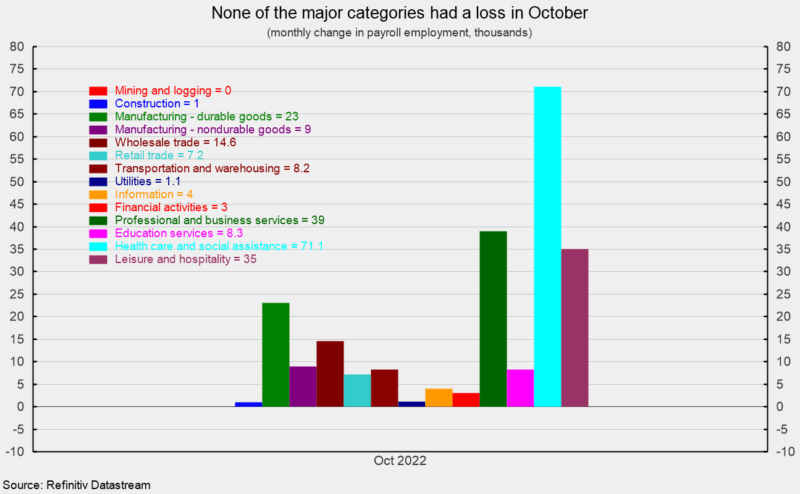
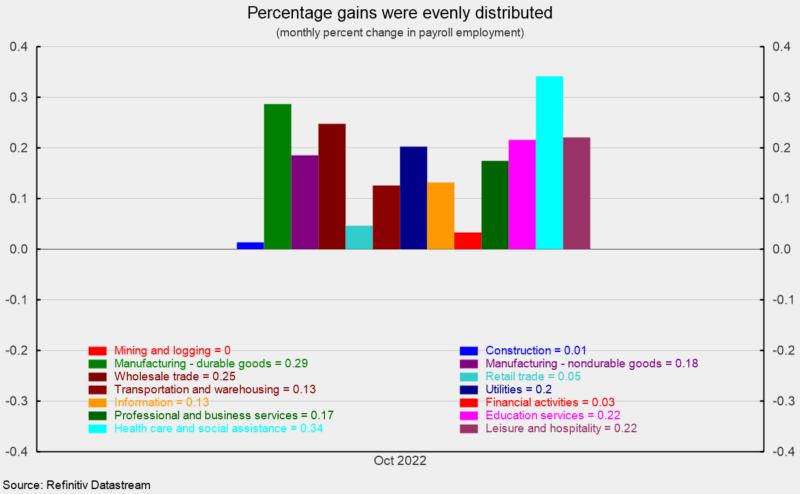
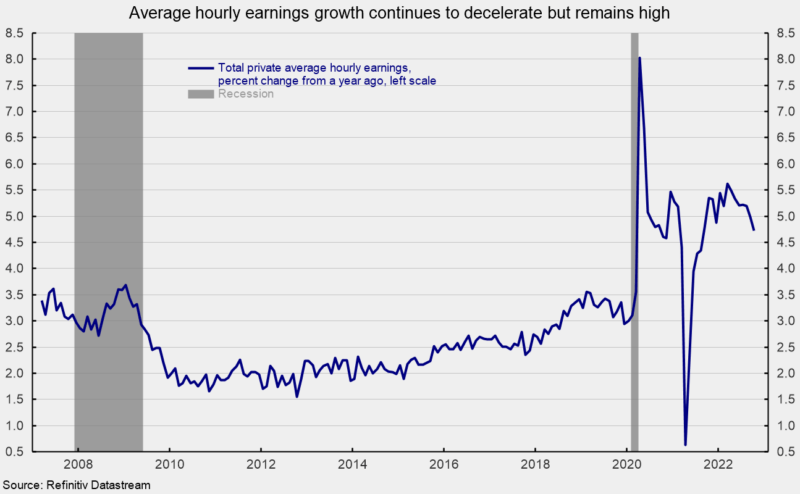
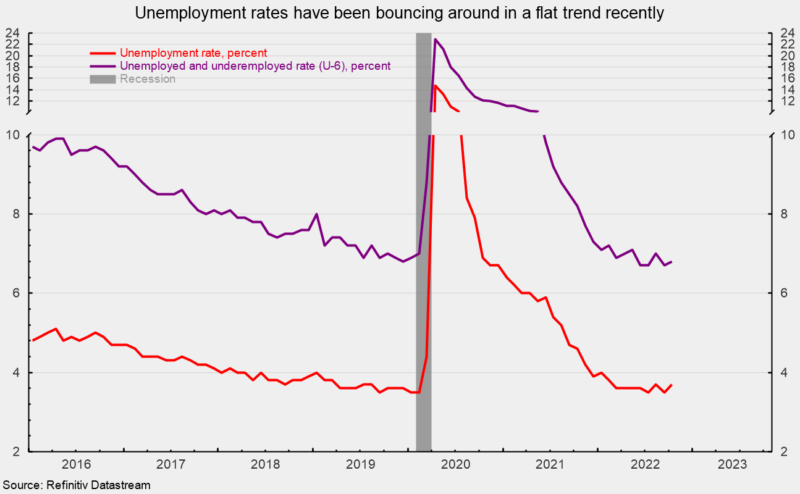
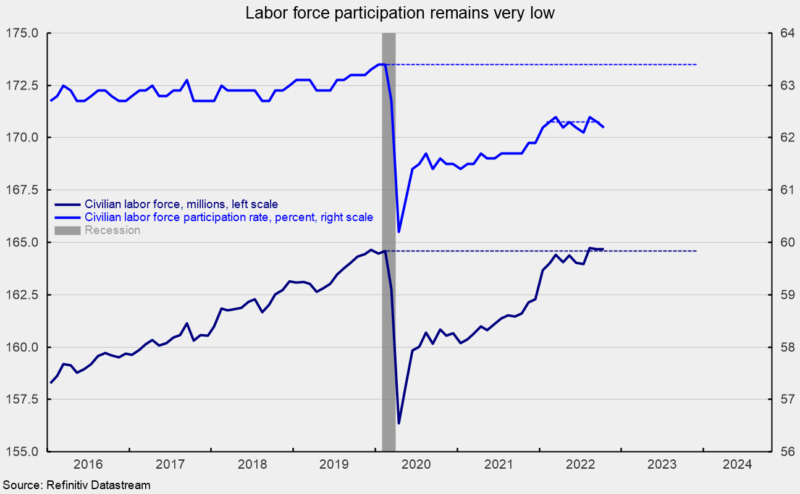

0 Comments